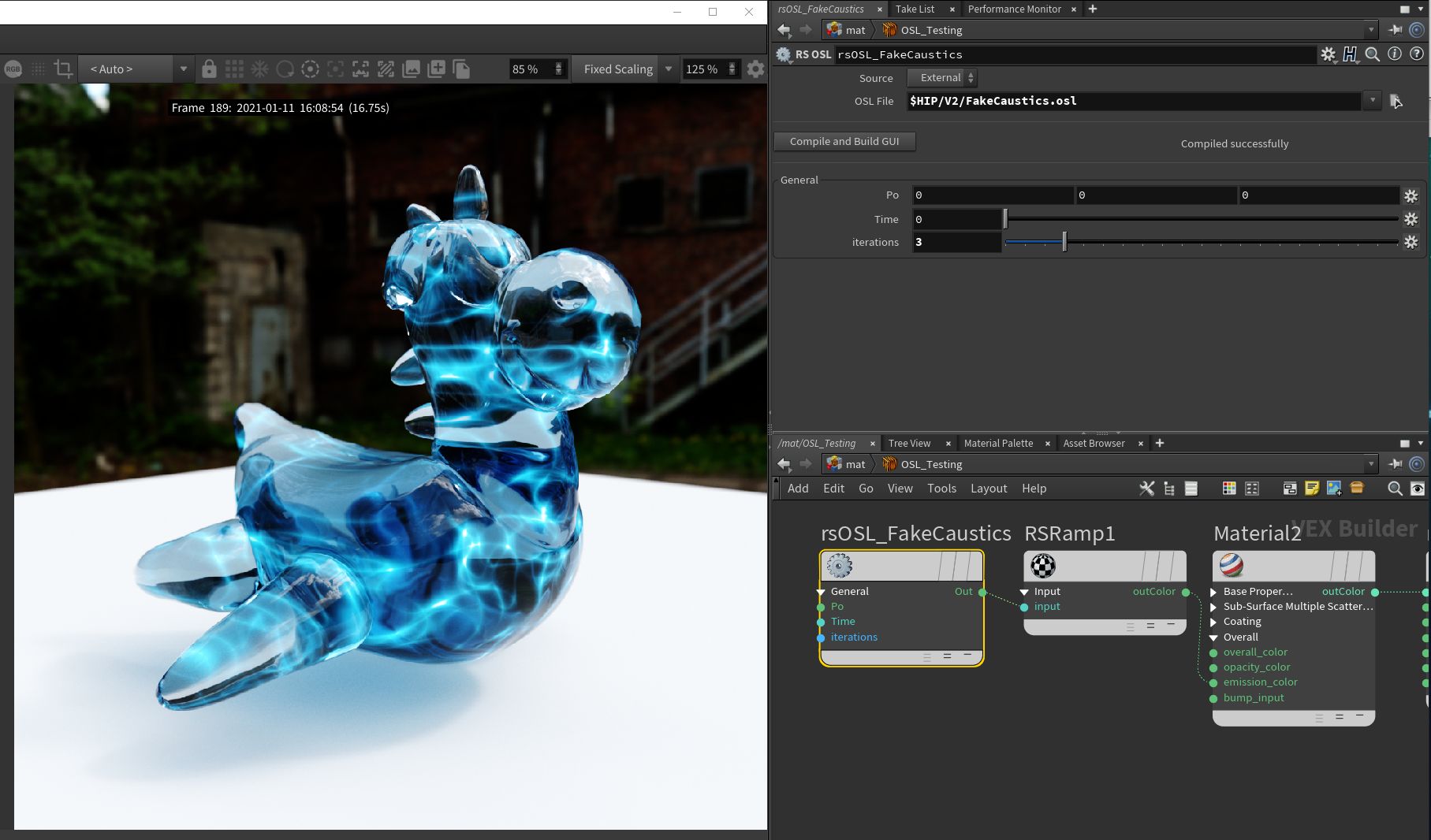
// Found this on GLSL sandbox. I really liked it, changed a few things and made it tileable.// by David Hoskins.// Water turbulence effect by joltz0r 2013-07-04, improved 2013-07-07// Updated 1/4/2020 by Saul Espinosa for Redshift 3D// This file is licensed under Apache 2.0 license// Redefine below to see the tiling...//#define SHOW_TILING#define TAU 6.28318530718shader FakeCaustics[[ string help = "generates a psuedo caustic like noise pattern", string label = "Fake Caustics" ]]( point Po = P, float Time = 0 [[ float min = 0, float max = 100 ]], int iterations = 5 [[ int min = 0, int max = 20 ]], output color Out = 0, ) { float tt = Time * .5+23.0; // uv should be the 0-1 uv of texture... vector uv = Po; vector p = mod(uv*TAU*2.0, TAU)-250.0; // vector p = mod(uv*TAU, TAU)-250.0; vector i = vector(p); float c = 1.0; float inten = .005; for (int n = 0; n < iterations; n++) { float t = tt * (1.0 - (3.5 / float(n+1))); i = p + vector(cos(t - i[0]) + sin(t + i[1]), sin(t - i[1]) + cos(t + i[0]),0); c += 1.0/length(vector(p[0] / (sin(i[0]+t)/inten),p[1] / (cos(i[1]+t)/inten),0)); } c /= float(iterations); c = 1.17-pow(c, 1.4); vector colour = vector(pow(abs(c), 8.0)); colour = clamp(colour + vector(0.0, 0.35, 0.5), 0.0, 1.0);/* #ifdef SHOW_TILING // Flash tile borders... vec2 pixel = 2.0 / iResolution.xy; uv *= 2.0; float f = floor(mod(iTime*.5, 2.0)); // Flash value. vec2 first = step(pixel, uv) * f; // Rule out first screen pixels and flash. uv = step(fract(uv), pixel); // Add one line of pixels per tile. colour = mix(colour, vec3(1.0, 1.0, 0.0), (uv.x + uv.y) * first.x * first.y); // Yellow line*/ Out = vector(colour); Out = pow(Out,2.2);}


